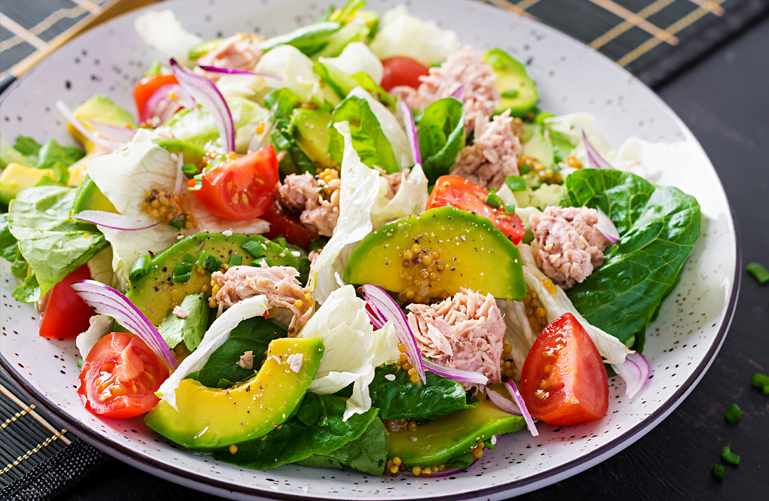This Greek salad recipe is a delicious and refreshing mix of Mediterranean flavors. It is composed of a base of juicy tomatoes and crisp cucumbers, accompanied by spicy red onion and green pepper. Crumbled feta cheese adds a salty, creamy flavor, while kalamata olives add a touch of richness.

Greek salad and health benefits
Greek salad, being mainly composed of fresh and healthy ingredients, offers various health benefits. Some of them include:
- Balanced nutrition: Greek salad is a rich source of vitamins, minerals and antioxidants due to tomatoes, cucumbers, red onion, green pepper and olives. These ingredients provide essential nutrients to maintain a healthy body.
- Hydration: The cucumbers and tomatoes present in the salad have a high water content, which helps keep the body hydrated.
- Dietary fiber: The vegetables present in Greek salad are a good source of fiber, which helps improve digestion, promotes satiety and contributes to the maintenance of a healthy digestive system.
- Cardiovascular health: Regular consumption of olive oil, used as a dressing on Greek salad, has been associated with cardiovascular health benefits. Olive oil contains healthy fats that can help reduce LDL cholesterol (“bad” cholesterol) and promote heart health.
- Antioxidants: The tomatoes, cucumbers, and kalamata olives in the salad are rich in antioxidants, which help protect the body against damage caused by free radicals and contribute to overall health.
It is important to note that health benefits may vary depending on the ingredients used, the amount of dressing, and the portions consumed. In addition, it is advisable to adapt the recipe to individual needs and preferences.
History of Greek salad
Greek salad, known as “horiatiki” in Greek, is a traditional dish of Greek gastronomy that has become an emblematic dish of Mediterranean cuisine. Its history dates back to ancient Greece, although the modern version we know today was consolidated at the beginning of the 20th century.
Greek salad is a simple and delicious combination of fresh, high-quality ingredients that reflect the abundance of the Mediterranean region. Although there may be variations in the recipe depending on region or personal taste, the basic ingredients usually include:
- Ripe and juicy tomatoes.
- Fresh and crisp cucumbers.
- Red or white onion, cut into thin slices.
- Kalamata olives, which provide a characteristic salty flavor.
- Greek feta cheese, crumbled or in pieces.
- Dried oregano, an aromatic herb that enhances the flavor of the salad.
- Extra virgin olive oil, used as the main dressing.
- Salt and pepper to taste.
Greek salad is typically served as a fresh and refreshing dish, ideal for warm summer days. It is a popular choice both as a light side dish and as a main dish, especially when added toppings such as grilled chicken or falafel.
Although Greek salad has been part of the Mediterranean diet for centuries, its popularity skyrocketed in the 20th century with the growth of tourism in Greece and the spread of Greek cuisine around the world. Today, it is widely appreciated for its fresh flavor, healthy ingredients and simplicity, and is found on Mediterranean restaurant menus and in homes around the world.
You may also like: Buddha Bowl
Image credit: freepik



